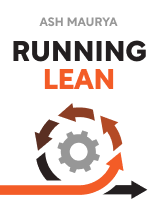

This article is an excerpt from the Shortform book guide to "Running Lean" by Ash Maurya. Shortform has the world's best summaries and analyses of books you should be reading.
Like this article? Sign up for a free trial here.
How do you set up a small business? What are some small business growth strategies that you can integrate into your business model?
To set up a small business, you need to draft a business model that’s flexible and adaptive. You should take into account your customer wants and needs both in your initial plan and as you grow.
Learn how to set up a small business using these strategies from Ash Maurya’s Running Lean.
Lean Canvas for Small Businesses
The first step toward drafting a successful business model is to articulate your hypothesis regarding the factors that will drive its success. During this step, Maurya uses terms like “hypotheses” or “assumptions” to emphasize that your ideas are educated guesses that require validation through research, experimentation, and real-world feedback. He recommends using a Lean Canvas—a condensed, one-page framework for how to set up a small business that is flexible and evidence-based.
(Shortform note: Maurya adapted this framework from the Business Model Canvas by Alexander Osterwalder and Yves Pigneur, authors of Business Model Generation. The Business Model Canvas offers a comprehensive framework tailored for established businesses seeking to assess existing strategies, analyze competitors, or design new ventures. In contrast, the Lean Canvas is crafted for startups, concentrating on pivotal business aspects like problem-solution fit and competitive edge. This focus makes it a versatile tool for rapidly testing and refining new business ideas.)
Why use a Lean Canvas in place of a traditional business plan? According to Maurya, traditional business plans are lengthy. As such, they require time-consuming revisions that can hinder your ability to capture and act on market insights—resulting in the business model becoming quickly outdated. In contrast, a Lean Canvas provides a more agile alternative that not only saves time but also encourages an iterative process. By condensing your ideas into a single page, you can swiftly communicate, validate, and update your business model to incorporate new insights and quickly respond to market feedback. Communicating and validating your business model are key parts of how to set up a small business for success.
(Shortform note: There are many alternatives to this template—each template emphasizes different areas and priorities for developing specific business models. For instance, the Blitzscaling Canvas prioritizes speed over efficiency, making it ideal for startups aiming for rapid growth in highly competitive markets. Alternatively, the RTVN (Resources, Threats, Values, and Needs) model helps assess available resources, identify potential threats, and align values and customer needs, making it suitable for businesses operating in uncertain or volatile environments.)
Advice on Drafting Your Lean Canvas
Maurya suggests three key pieces of advice for how to set up a small business using Lean Canvas:
1) Start by filling out the elements that you understand best. Initially focusing on what you know well provides a strong cornerstone upon which to shape your ideas. (Shortform note: Research suggests that starting with what you know works as a catalyst for innovation. By initially addressing familiar elements, you’re more likely to make progress, enhance your confidence, and generate positive momentum that pushes you to explore the more complex or unknown elements of your business model.)
2) Keep your hypotheses brief and straightforward. Concise statements serve as guiding principles that help maintain focus as you iterate and refine your business model. (Shortform note: Concise hypotheses require a delicate balance between conveying essential information and maintaining brevity. If you struggle with this balance, apply the “So what?” test: For every piece of information you’re tempted to add, ask yourself: “Does this significantly enhance understanding of the statement?” If the answer isn’t a resounding “yes,” omit it. Additionally, consider creating a secondary document to capture additional points you want to remember.)
3) Create a separate Lean Canvas for every customer group you identify, as each will likely have unique requirements that influence various elements of your business model. This approach encourages you to explore multiple possibilities rather than fixating on a single implementation of your idea—which, in turn, increases your chances of developing a profitable business model.
(Shortform note: Osterwalder and Pigneur (Business Model Generation) echo this approach, emphasizing that each business model element is an interdependent component—meaning that changes to one element often require adjustments in the others. For example, catering to both budget-conscious and premium-seeking customers requires two distinct pricing structures. According to them, customer groups are distinct enough to require separate business models if you need to create different products and services to meet their needs, reach them through different distribution channels, develop different types of relationships with them, or adapt your pricing structures to accommodate their needs. In thinking about how to set up a small business, you need to consider whether different customer groups will have very different needs.)
Small Business Growth Strategies: How to Generate a Profit
Hypothesize how you intend to generate a profit and the prices that your target customer groups will pay. Maurya emphasizes the importance of setting prices early on, as it influences the customer groups you’ll attract.
| Different Ways to Profit From Your Business Understanding the multiple ways you can profit from your offer will help you determine the right prices and pricing structures at this step. In Business Model Generation, Osterwalder and Pigneur explain that there are two types of income streams: single transactions (for instance, selling a car) and subscriptions (leasing a car). You can apply both profit sources in the same business—for example, earning an income from selling cars and offering car leasing services. Further, you can set either fixed or variable prices for your products and services—for example, setting a standard selling price for cars or adding extra charges for optional features like advanced technology packages or premium interior upgrades. Once you know the profit structure that makes the most sense for your business, determine the appropriate price for your product or service. Experts recommend considering how much value customers attach to your products and services before you determine your prices. In other words, customers perceive the value of your products and services in different ways depending on their specific requirements. If you build these variations into your pricing structure, you’ll receive higher profits than you would with a single pricing policy. For example, a customer with concerns about the environment might value a hybrid car more than a customer who isn’t as environmentally conscious. Therefore, marketing this car to eco-conscious consumers at a premium price could generate more profit than marketing to everyone at a set price. |
Expenses: How to Set Up a Small Business While Being Mindful of Costs
Hypothesize the expenses associated with operating your business model. Maurya advises that you consider both short-term and long-term expenses.
| Guidance on Assessing Your Expenses If you’re unsure how to determine your expenses, Osterwalder and Pigneur (Business Model Generation) offer more in-depth guidance on assessing your resource needs. They suggest three steps: First, outline all of the resources you need to create and deliver your offer to your customers. All resources fall into the following categories: Material: raw materials, buildings, factories, vehicles, and machinery Monetary: cash, credit, and stock optionsIntellectual: brand equity, copyrights, patents, and knowledge databases Human: experienced staff members and specialists Second, define the resources that you don’t currently have and make a plan for acquiring them. Will you buy, lease, or borrow them? Third, once you have a clear idea of all of the resources your product or service requires, outline your expenses. Your expenses will include at least one of the following characteristics: Fixed costs: salaries, rents Variable costs: costs that vary in proportion to the volume of goods or services produced Economies of Scale: cost-per-unit rates decrease according to bulk-purchasing advantages Economies of Scope: a single resource or activity that supports multiple operations or services Additionally, all of your costs will fall into two categories: Direct costs—specific expenses related to your offer, such as paying to manufacture your product—and indirect costs—general costs that keep your business operating such as paying rent, utilities, and salaries. Understanding these cost categories helps you identify and break down your expenses, which, in turn, aids in precise financial planning and management. |
Exercise: Create an Overview of Your Business Model
This exercise will walk you through the process of defining the customer group you’ll target, identifying their problems, and determining how you’ll solve these problems. Follow these steps as you’re creating an overview of your business model.
Step 1: Think of one product or service you intend to offer and briefly describe it. (For example, you intend to offer comfortable orthopedic shoes.)
Step 2: Write down at least one customer group that will want your product or service. (For example, you might target middle-aged adults with conditions like plantar fasciitis, who seek effective solutions to alleviate foot pain.)
Step 3: Consider the customer group you chose. Write down at least one problem they face when using existing products or services. (For example, this customer group often has to put up with unattractive footwear options for the sake of pain relief.)
Step 4: Think of some simple ways to address the customer problem(s) you’ve identified. Write down at least one way to integrate a solution into your product or service. (For example, you could emphasize ergonomic design and style, thus ensuring both optimal comfort and a fashionable appearance.)

———End of Preview———
Like what you just read? Read the rest of the world's best book summary and analysis of Ash Maurya's "Running Lean" at Shortform.
Here's what you'll find in our full Running Lean summary:
- The reason why so many business models fail
- Why you should never assume you know what your customers want
- Why your business should be built on continuous validation and iteration






